
Geograficidade
Scope & Guideline
Fostering Dialogue on Environmental Implications
Introduction
Aims and Scopes
- Interdisciplinary Approaches to Geography:
The journal embraces a multidisciplinary perspective, integrating insights from art, performance, and cultural studies to explore geographical concepts and experiences. - Exploration of Artistic Practices:
A significant focus is placed on artistic interventions and practices that challenge traditional geographical understandings, highlighting the role of art in spatial narratives. - Cultural and Political Dimensions of Space:
The journal examines how cultural identities and political movements are expressed through geographical spaces, particularly in urban environments and public art. - Phenomenology and Spatial Experience:
Utilizing phenomenological frameworks, 'Geograficidade' investigates how individuals perceive and interact with their environments, emphasizing subjective experiences of space. - Community and Collective Practices:
A core area of interest is the exploration of community practices and collective experiences in geographical contexts, particularly in relation to social justice and activism.
Trending and Emerging
- Art as a Form of Resistance:
A growing trend highlights the use of art as a means of resistance and social critique, particularly in urban settings where art interventions challenge dominant narratives and power structures. - Experiential and Performative Geographies:
There is an increasing focus on experiential and performative geographies, where walking, bodily movements, and participatory practices are explored as methods of engaging with and understanding space. - Intersectionality in Geographical Studies:
Emerging themes include the intersectionality of identities (such as gender, race, and sexuality) in geographical contexts, particularly in relation to public spaces and community experiences. - Environmental and Urban Activism:
The journal is increasingly addressing themes of environmental activism and urban interventions, emphasizing the role of communities in responding to ecological crises through creative and collective actions. - Digital Geographies and Virtual Spaces:
With the rise of digital technologies, there is a notable interest in exploring digital geographies and the implications of virtual spaces on identity, community, and social interactions.
Declining or Waning
- Traditional Geographic Methodologies:
There has been a noticeable decrease in studies employing conventional geographic methodologies, such as quantitative analysis and mapping, as the journal shifts towards more qualitative and experiential approaches. - Focus on Static Landscapes:
The exploration of static landscapes and traditional topographical studies appears to be waning, with a growing emphasis on dynamic, lived experiences rather than fixed geographical representations. - Historical Geography:
Research related to historical geography and the examination of past geographic events has become less prominent, as contemporary issues and current cultural practices take precedence. - Environmental Determinism:
Themes related to environmental determinism, which suggest that human behavior is shaped predominantly by the physical environment, are declining as the journal increasingly advocates for a more nuanced understanding of agency and context in geography.
Similar Journals
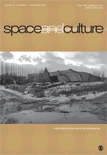
Space and Culture
Advancing Interdisciplinary Scholarship in Arts and HumanitiesSpace and Culture is a distinguished peer-reviewed journal published by SAGE Publications Inc. This journal, with an ISSN of 1206-3312 and E-ISSN of 1552-8308, has established itself as a prominent platform for interdisciplinary scholarship in the realms of Arts and Humanities, Cultural Studies, Geography, and Urban Studies. With a remarkable reputation reflected in its recent Scopus rankings, including Q1 status in multiple categories, it appeals to researchers and professionals interested in examining the complex interrelations of space, culture, and society. Covering a diverse range of themes from urban studies to tourism, the journal aims to foster innovative conversations and critical thinking. Its commitment to academic excellence ensures that contributors can engage with a global audience, making it an invaluable resource for students and scholars alike.

Acta Geographica Slovenica-Geografski Zbornik
Connecting researchers to the heart of geographical inquiry.Acta Geographica Slovenica-Geografski Zbornik is a prominent academic journal published by the Geografski Institut Antona Melika ZRC SAZU, situated in Slovenia. This open-access journal, active since 2003, has made significant strides in the fields of cultural studies, geography, and earth sciences, earning impressive rankings in its respective categories—Q1 in Cultural Studies and Q3 in both Earth and Planetary Sciences and Geography, Planning and Development. With an impactful presence evidenced by its Scopus rankings, including being placed in the 90th percentile for Cultural Studies, Acta Geographica Slovenica serves as an essential platform for researchers, professionals, and students alike, facilitating accessible scholarly dialogue and contributing to the development of geographical and cultural knowledge. The journal is dedicated to advancing research that develops innovative perspectives on geographical phenomena, making it an invaluable resource within the academic community.
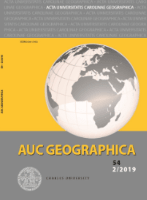
AUC Geographica
Navigating the Complexities of Our PlanetWelcome to AUC Geographica, a distinguished journal published by CHARLES UNIV PRAGUE, KAROLINUM PRESS, focusing on the expansive and interdisciplinary fields of Earth and Planetary Sciences, as well as Geography, Planning, and Development. With an ISSN of 0300-5402 and an E-ISSN of 2336-1980, this Open Access journal has been freely accessible since 2010, allowing researchers, professionals, and students to engage with high-quality scholarly articles without barriers. As of 2023, it holds a Q4 ranking in its respective categories, reflecting its commitment to contributing to the academic discourse despite competitive landscapes. Located in Prague, Czech Republic, at OVOCNY TRH 3/5, PRAGUE 1 116 36, AUC Geographica aims to foster collaboration and innovative research in the multifaceted relationships between human activities and the natural environment. With a publication history spanning from 1975 to 2024, this journal continues to be a vital resource for those seeking to advance knowledge and explore new dimensions in geography and Earth sciences.

GEOgraphia-UFF
Fostering Global Dialogue in GeographyGEOgraphia-UFF is an esteemed open-access journal dedicated to the dissemination of innovative research and scholarship in the field of geography. Published by Universidade Federal Fluminense since 2014, this journal serves as a vital platform for researchers, professionals, and students to explore a diverse array of geographical topics, from human-environment interactions to urban studies and spatial analysis. With a pronounced commitment to accessibility and knowledge sharing, GEOgraphia-UFF promotes a collaborative academic environment, fostering dialogue and critical engagement among scholars worldwide. Located in the picturesque region of Rio de Janeiro, Brazil, the journal aims to bridge local insights with global geographical challenges, ensuring relevance and impact in the ever-evolving discourse of our discipline. This journal is an indispensable resource for anyone looking to stay at the forefront of geographical research.

Perspectiva Geografica
Engaging Minds in the Study of Geography and Its ImpactPerspectiva Geografica is a distinguished open-access journal published by the UNIV PEDAGOGICA & TECNOLOGICA COLOMBIA, dedicated to advancing the field of geography. Launched in 2005, this journal provides a platform for researchers, academics, and practitioners to disseminate and discuss innovative ideas, empirical research, and critical analyses pertaining to geographic issues, with a special focus on Latin America. Perspectiva Geografica aims to foster interdisciplinary dialogue, encouraging contributions that explore the interplay between geographical phenomena and socio-economic dynamics. Designed for a global readership, this journal welcomes submissions that not only adhere to rigorous academic standards but also engage with pressing geographical challenges of our time. With a commitment to enhancing accessibility to quality research, Perspectiva Geografica is an essential resource for scholars and students seeking insights into both theoretical and applied geography.
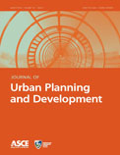
JOURNAL OF URBAN PLANNING AND DEVELOPMENT
Transforming Urban Futures, One Study at a Time.The JOURNAL OF URBAN PLANNING AND DEVELOPMENT, published by the ASCE-AMER SOC CIVIL ENGINEERS, stands as a pivotal platform in the realms of urban studies, civil and structural engineering, and development. With an ISSN of 0733-9488 and E-ISSN of 1943-5444, this journal aims to disseminate high-quality research addressing critical urban planning challenges, fostering innovative solutions, and contributing to sustainable development practices. Spanning from its inception in 1979 to the anticipated issues up to 2024, the journal proudly occupies the Q2 category across multiple disciplines, including Civil and Structural Engineering, Development, Geography, Planning and Development, and Urban Studies. Its noteworthy Scopus rankings reflect its influence, notably being positioned in the 76th percentile in Urban Studies. With no open access options currently available, the journal remains a selective forum for scholarly discourse, attracting researchers, professionals, and students eager to engage with cutting-edge developments in urban planning and design.

Geo UERJ
Empowering Scholars with Open Access KnowledgeGeo UERJ is a renowned open-access journal published by Universidade do Estado do Rio de Janeiro (UNIV ESTADO RIO JANEIRO), focused on the multifaceted study of geography and related disciplines. Established to foster innovation and disseminate high-quality research, Geo UERJ has been dedicated to making scholarly work accessible since its transition to open access in 2007. The journal aims to provide a platform for researchers, professionals, and students to share insights into geographical phenomena, environmental issues, and urban studies, contributing to the global discourse on sustainability and spatial analysis. Its publications serve as valuable resources for academicians looking to stay abreast of cutting-edge developments within the geography field. With the ISSN 1415-7543 and E-ISSN 1981-9021, Geo UERJ invites contributions from diverse perspectives, enriching the academic landscape with important geographic research from Brazil and beyond.
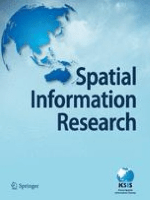
Spatial Information Research
Unveiling insights through innovative spatial research.Spatial Information Research, published by SPRINGER SINGAPORE PTE LTD, is a prominent journal committed to advancing the interdisciplinary field of spatial information science. With an ISSN of 2366-3286 and an E-ISSN of 2366-3294, this journal serves as a crucial platform for disseminating research findings from 2016 to 2024, focusing on applications in Artificial Intelligence, Computer Science Applications, and Geography, among others. Ranking in the Q2 and Q3 quartiles across various categories, it showcases impactful research that informs geographic planning, environmental sciences, and computational methodologies. The journal's rigorous peer-review process ensures high-quality contributions that offer insights for both academic scholars and industry professionals. While retaining exclusive access options, Spatial Information Research is a vital resource for researchers eager to explore the complexities of spatial data and its applications in real-world scenarios.
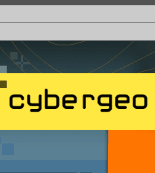
CyberGeo-European Journal of Geography
Pioneering Critical Insights in European GeographyCyberGeo-European Journal of Geography, published by CYBERGEO, is a leading open-access journal that has been at the forefront of geographical research since its inception in 1996. With a dedicated focus on the multifaceted dimensions of geography, the journal aims to disseminate innovative and critical insights into geographical phenomena in Europe and beyond. The journal has established itself in the academic community, currently holding the Q3 quartile ranking in the Social Sciences (miscellaneous) category for 2023 and recognized within Scopus as #428 out of 604, placing it in the 29th percentile. CyberGeo publishes original research articles, thematic issues, and reviews that contribute to the advancement of geographical knowledge, making it an essential resource for researchers, professionals, and students alike. Situated in Paris, France, the journal embraces a truly international perspective and invites contributions that stimulate scholarly debate and further the understanding of spatial dynamics. By providing open access to its content, CyberGeo ensures that its research is accessible to a global audience, promoting knowledge sharing and collaborative exploration in the field of geography.

Geografia-Malaysian Journal of Society & Space
Connecting Scholars to the Heart of Malaysian Society and SpaceGeografia-Malaysian Journal of Society & Space, published by the esteemed Universiti Kebangsaan Malaysia through its Faculty of Social Sciences & Humanities, stands as a vital platform for scholarly discourse in the fields of geography, social sciences, and spatial studies. With its ISSN 2180-2491 and E-ISSN 2682-7727, this journal emphasizes the importance of regional studies, fostering a deep understanding of societal dynamics within the Malaysian context and beyond. Although currently lacking impact factor and HIndex data, the journal is poised to contribute significantly to academic discussions, urging researchers, professionals, and students to explore spatial complexities influencing social structures. Geografia aims to publish high-quality, peer-reviewed works, focusing on innovative theoretical and empirical research that addresses contemporary issues in society and space. By promoting open access to its content, it ensures that knowledge is freely available, furthering academic engagement and collaboration in the global scholarly community.